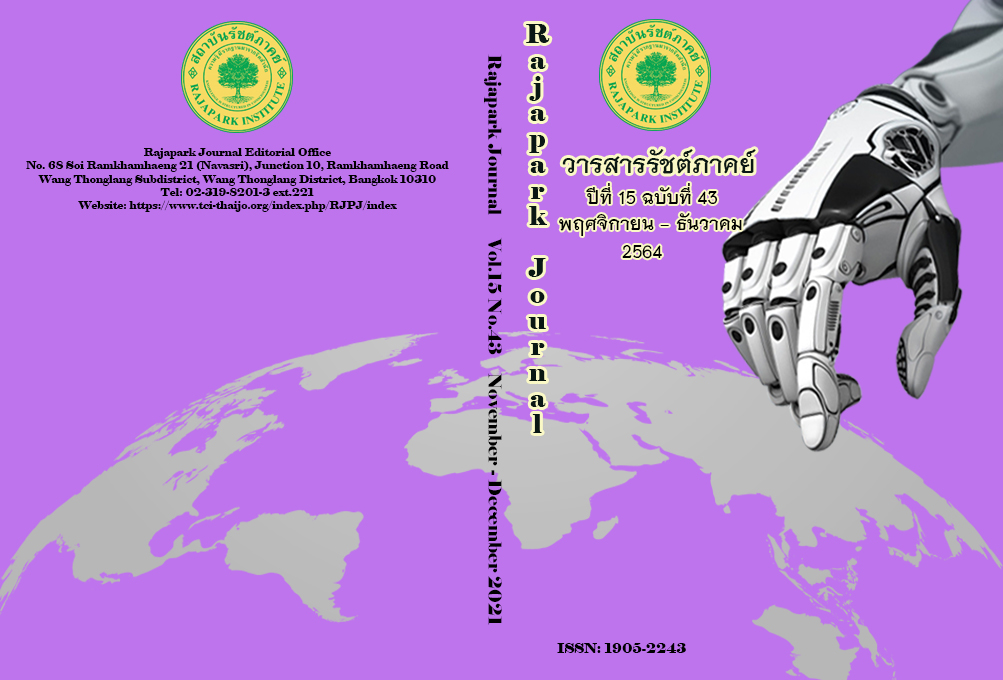University Outcomes and Information Disclosure: The Case Study of Annual Reports
Main Article Content
Abstract
The objective of this research article is to study the information transparency and outcomes of the world’s leading universities to create a benchmark and analysis with Thai universities. Furthermore, we analyze Thai universities’ outcomes in various aspects including the disclosure of information to stakeholders and their accessibility to the information. We also see how the universities can respond to the needs of the society and stakeholders, and whether it corresponds to the ten principles of governance. The research methodology used is reviewing annual reports of the world's top universities according to Times Higher Education and in-depth interviews with top management of government universities and government-directed universities. Results show that universities can respond to the needs of stakeholders and correspond to the ten principles of governance. Australia gives the highest importance to disclosing information via annual reports and most universities provide relevant and detailed information necessary for stakeholders. Although Thai universities provide annual reports, it is not detailed and there is no national form or standard for providing the necessary information.
Article Details
Views and opinions appearing in the Journal it is the responsibility of the author of the article, and does not constitute the view and responsibility of the editorial team.
References
Alcala, R., & Markosyan, R. (2017). Toolkit to Enhance Transparency and Accountability in Governance of Higher Education Institutions in Armenia. European Union.
American Accounting Association. Committee on Concepts and Standards for External Financial Reports. (1977). Statement of Accounting Theory and Theory Acceptance. Sarasota: Author.
Baird, J. (2006). Beyond Professionalisation: Enhancing the Governance Culture for Australian University Governing Boards. Tertiary Education and Management, 12(4), 297–309. DOI: 10.1080/13583883.2006.9967175
Cave, M., Hanney, S., Henkel, M., & Kogan, M. (1997). The Use of Performance Indicators in Higher Education: The Challenge of the Quality Movement (3rd ed.). Jessica Kingsley Publishing, London.
Committee of University Chairmen [CUC]. (2004). Guide for Members of Higher Education Governing Bodies in the United Kingdom - Governance Code of Practice and General Principles. Bristol: Higher Education Funding Council of England.
Coy, D., Fischer, M., & Gordon, T. (2001). Public Accountability: A New Paradigm for College and University Annual Reports. Critical Perspectives on Accounting, 12(1), 1–31. DOI:10.1006/cpac.2000.0416
Dixon, K., & Coy, D. (2007). University Governance: Governing Bodies as Providers and Users of Annual Reports. Higher Education, 54(2), 267-291. DOI:10.1007/s10734-005-3146-0
Dooley, A. H. (2007). The Role of Academic Boards in University Governance. Australian Universities Quality Agency.
Edwards, M. (2003). Review of New Zealand Tertiary Education Governance. Wellington, New Zealand: Ministry of Education.
Ferris, J. (1992). School-Based Decision Making: A Principle-Agent Perspective. Educational Evaluation and Policy Analysis, 14(4), 333-346. https://doi.org/10.2307/1164279
Gailmard, S. (2012). Accountability and Principle-Agent Theory. The Oxford Handbook of Public Accountability. DOI: 10.1093/oxfordhb/9780199641253.013.0016
Jongbloed, B., & Vossensteyn, H. (2001). Keeping Up Performances: An International Survey of Performance-based Funding in Higher Education. Journal of Higher Education Policy and Management, 23(2), 127-145.
Macias, A. (2012). A Case Study Using Principle-Agent Theory to Explore How a Public, Four Year University Interacts with a System Office. UNLV Theses, Dissertations, Professional Papers, and Capstones. 1752. http://dx.doi.org/10.34917/4332733
Solomons, D. (1986). Making Accounting Policy: The Quest for Credibility in Financial Reporting. New York: Oxford University Press.
Suri, A. K., & Adnan, J. (2016). Educational Institutions and Information Asymmetry Observation in UAE. Journal of Global Economics, 4, 213. DOI:10.4172/2375-4389.1000213
Thai Junior Encyclopedia [Saranukromthai]. (2013). Higher Education (Chapter 3, Volume 38). Retrieved from https://www.saranukromthai.or.th/sub/book/book.php?book=38&chap=3&page=t38-3-infodetail01.html
The International Federation of Accountants [IFAC]. (2001). Governance in the Public Sector: A Governing Body Perspective. New York: International Federation of Accountants.
The Organisation for Economic Co-operation and Development [OECD]. (2008). Tertiary Education for the Knowledge Society, Vol.1, Special Features: Governance, Funding, Quality. Retrieved from https://www.oecd.org/education/skills-beyond-school/41266690.pdf
Times Higher Education [THE]. (2019). World University Rankings 2019. Retrieved from www.timeshighereducation.com
Trakman, L. (2008). Modelling University Governance. Higher Education Quarterly, 62(1–2), 63-83. https://doi.org/10.1111/j.1468-2273.2008.00384.x
World Bank. (1989). Sub-Saharan Africa: from crisis to sustainable growth. Retrieved from http://documents.worldbank.org/curated/en/498241468742846138/pdf/multi0page.pdf
Yallew, A., Juusola, H., Ahmad, I., & Törmälä, S. (2018). Exploring Principle-agent Theory in Higher Education Research. Working Papers in Higher Education Studies, 3, 78-98.


